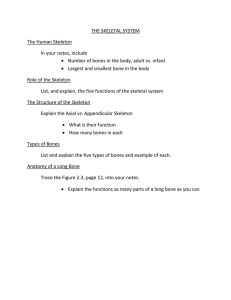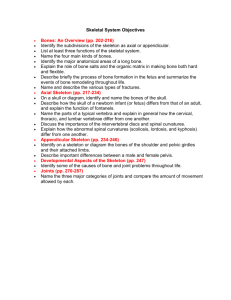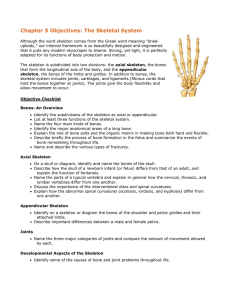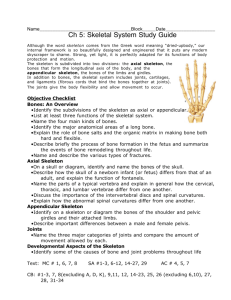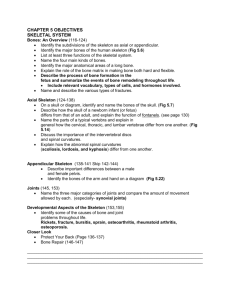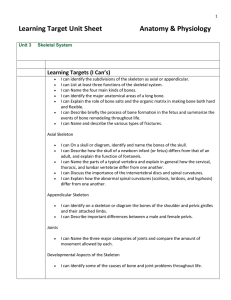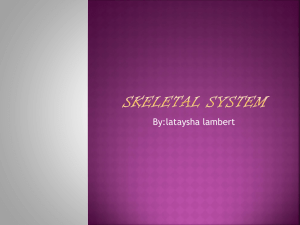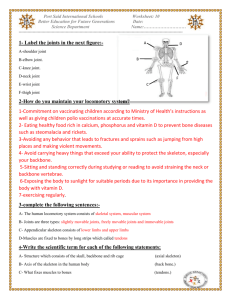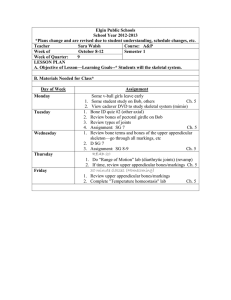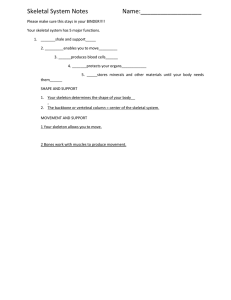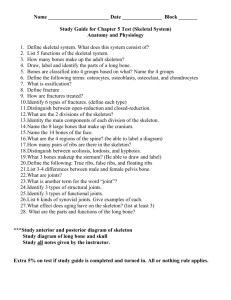Skeletal System Learning Objectives: Anatomy Study Guide
advertisement
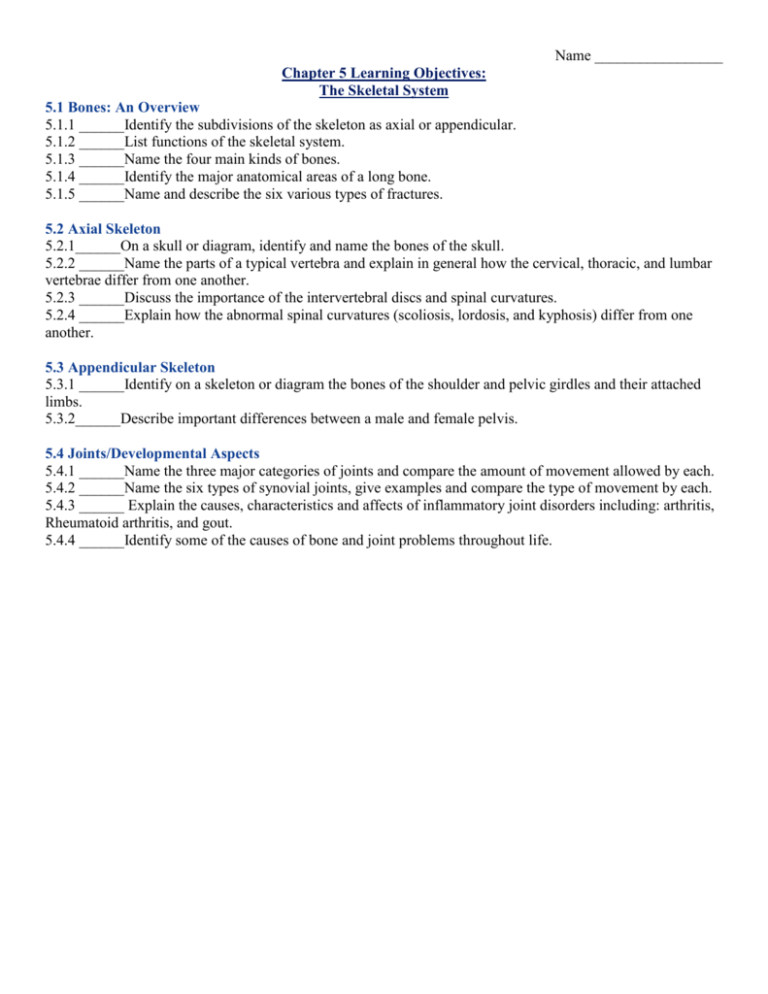
Name _________________ Chapter 5 Learning Objectives: The Skeletal System 5.1 Bones: An Overview 5.1.1 ______Identify the subdivisions of the skeleton as axial or appendicular. 5.1.2 ______List functions of the skeletal system. 5.1.3 ______Name the four main kinds of bones. 5.1.4 ______Identify the major anatomical areas of a long bone. 5.1.5 ______Name and describe the six various types of fractures. 5.2 Axial Skeleton 5.2.1______On a skull or diagram, identify and name the bones of the skull. 5.2.2 ______Name the parts of a typical vertebra and explain in general how the cervical, thoracic, and lumbar vertebrae differ from one another. 5.2.3 ______Discuss the importance of the intervertebral discs and spinal curvatures. 5.2.4 ______Explain how the abnormal spinal curvatures (scoliosis, lordosis, and kyphosis) differ from one another. 5.3 Appendicular Skeleton 5.3.1 ______Identify on a skeleton or diagram the bones of the shoulder and pelvic girdles and their attached limbs. 5.3.2______Describe important differences between a male and female pelvis. 5.4 Joints/Developmental Aspects 5.4.1 ______Name the three major categories of joints and compare the amount of movement allowed by each. 5.4.2 ______Name the six types of synovial joints, give examples and compare the type of movement by each. 5.4.3 ______ Explain the causes, characteristics and affects of inflammatory joint disorders including: arthritis, Rheumatoid arthritis, and gout. 5.4.4 ______Identify some of the causes of bone and joint problems throughout life.
